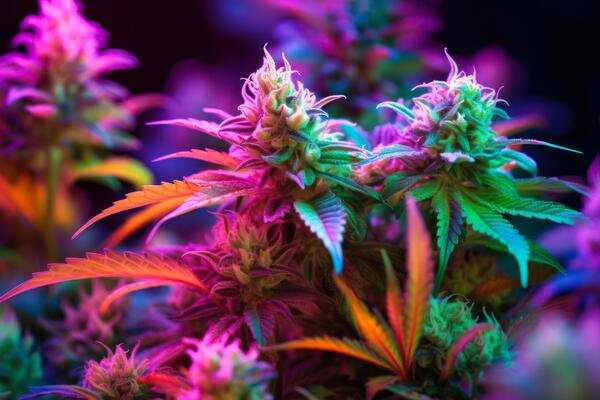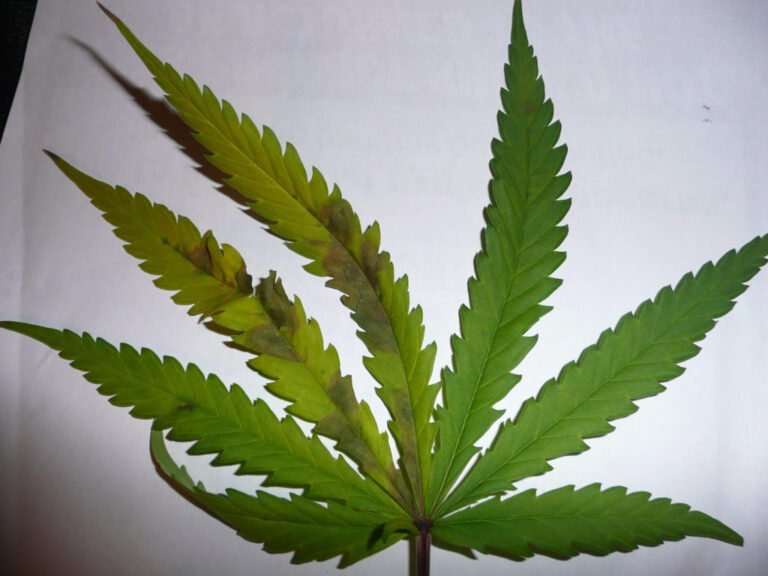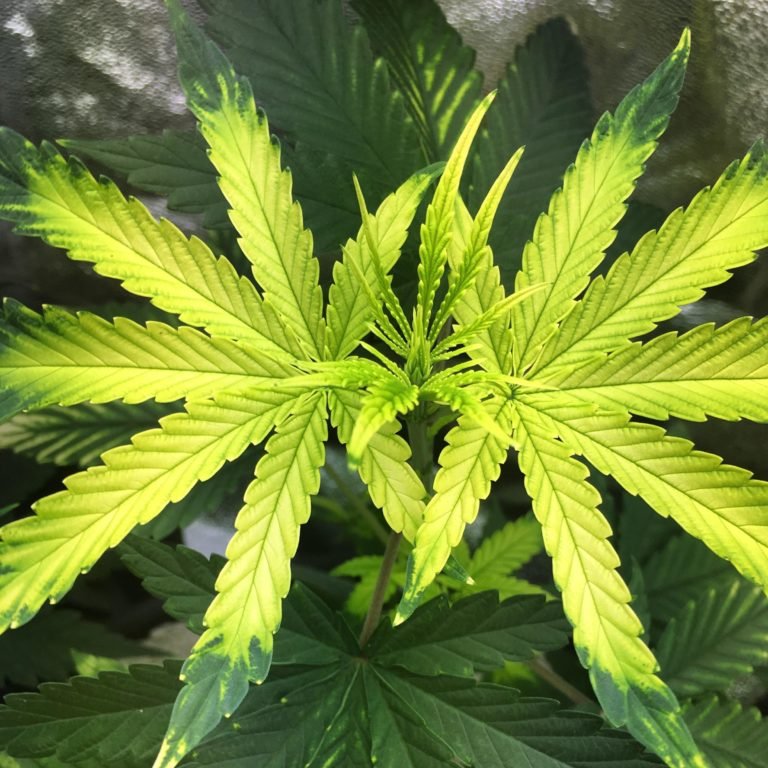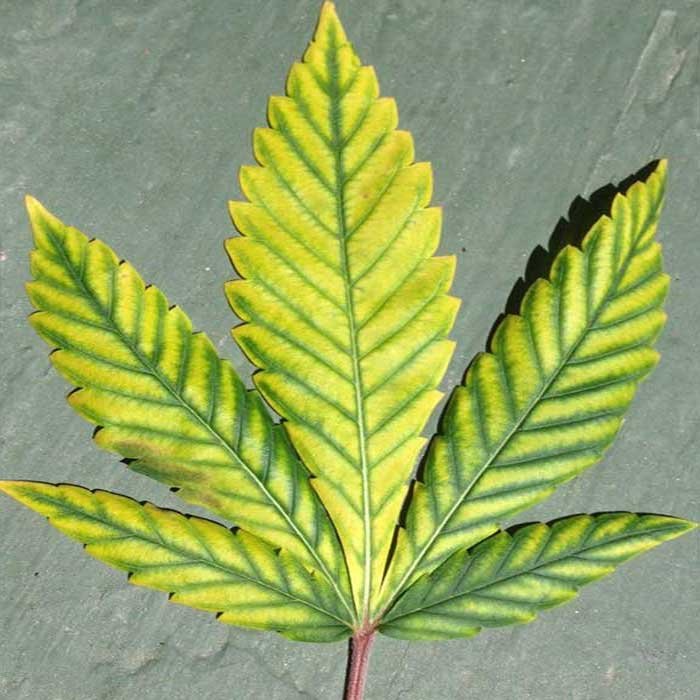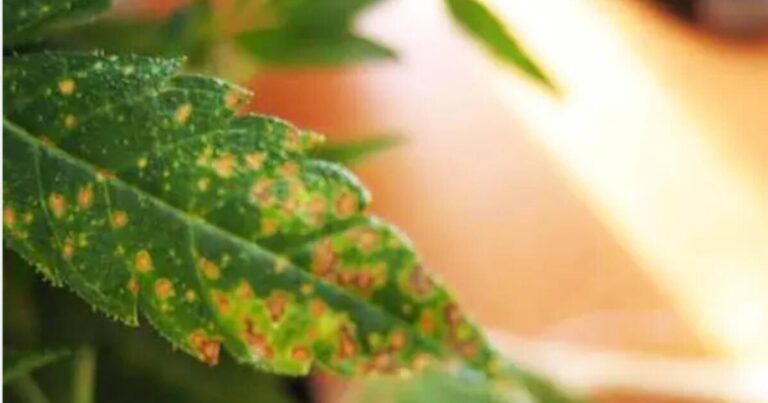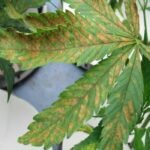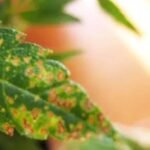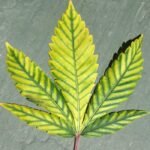Depending on various parameters such as genetics, nutrition or environmental conditions, cannabis leaves acquire one color or another.
Cannabis leaves
Leaves are a true symbol of the plant; they are complex and functional structures essential for proper growth and flowering. Their characteristic shape, with several thin leaflets and serrated edges, maximizes light absorption, which aids the plant in its photosynthesis process. This function is essential for growth, since, as you know, photosynthesis converts light into energy, essential for plant development.
Leaves also act as indicators of the plant’s health and environment, providing early warning signs of potential problems such as nutrient deficiencies, diseases, pests, or environmental stress. Carefully observing the color and texture of the leaves is crucial to understanding the plant’s overall condition and providing proper care.
Why are leaves green?
The green color of cannabis leaves comes from chlorophyll, a plant pigment that plays a fundamental role in the process of photosynthesis and can be found in plants, most algae, and cyanobacteria. Chlorophyll absorbs light in the red and blue wavelengths, reflecting green light, which gives leaves their characteristic color. This pigment is essential for the plant to convert light into energy, so the chlorophyll level directly reflects the plant’s health.

When a plant faces nutritional challenges, such as nutrient deficiencies (particularly Nitrogen) or an unbalanced soil pH, chlorophyll production can decrease, causing leaf color to shift toward paler or yellower hues.
As the plant ages, or during the flowering stage, chlorophyll can also naturally decrease, giving way to other pigments that give leaves beautiful colors palette.

(Pic of a plant with Nitrogen-deficiency)
Genetics, Environmental conditions and Nutrition
The color of cannabis leaves not only depends on the pigments present but can also depend on genetics, environmental conditions, and nutrition. Some strains, due to genetics, are predisposed to develop certain colors; for example, indica strains tend to have darker colors, while some sativas tend to be lighter green, a difference in tone that is often seen both during growth and flowering. Additionally, exposure to cooler temperatures, especially at night—conditions encountered by many indicas—can intensify anthocyanin production in plants predisposed to this, causing more intense colors such as purple and lilac.
A proper nutritional balance helps maintain a healthy, deep green color, while changes in this balance can result in unusual colors, usually showing yellow discolorations with one pattern or another, depending on the nutrient (or nutrients) causing the problem.

Leaves of other colors: Cannabis pigments
In cannabis plants, the main pigments are:
- Chlorophyll: This pigment gives the characteristic green color to most cannabis leaves. It is essential for photosynthesis, capturing light and transforming it into energy.
- Carotenoids: Responsible for yellow, orange, and red hues. These pigments also aid photosynthesis and protect the plant from damage caused by excessive light.
- Anthocyanins: These are pigments that produce purple, lilac, red, and blue hues. Their production can be stimulated by factors such as cold temperatures or stress conditions and varies depending on the plant’s genetics.
- Flavonoids: These include compounds such as quercetin and kaempferols, which can give a yellow color or contribute to the plant’s overall hue. They also protect against UV rays and various pathogens.

These pigments not only give cannabis its color, but also perform critical functions for its health and adaptation to the environment. Depending on the proportion of these pigments in the leaves, they will appear in different colors:
- Yellow: The yellow color of cannabis leaves generally indicates a nutritional deficiency, especially a N-deficiency, or an inadequate pH in the substrate that impedes nutrient absorption. It can also be a sign of stress, either due to extreme heat, overwatering, or lack of light. During flowering, it is common for the lower leaves to turn yellow, as the plant directs its energy toward the flowers.
- Lilac/Purple: Lilac or purple-hued leaves are also related to anthocyanins, pigments that develop under cold temperatures or when plants experience controlled stress. They appear in response to temperature variations and specific genetic conditions. The variation in the intensity of lilac and purple can depend on the genetics of the plant and the environment in which it is grown.
- Red: Red or orange leaves on cannabis plants may appear due to the presence of anthocyanins and carotenoids, pigments that can develop in response to low temperatures or environmental stressors. This can also occur in plants with Phosphorus deficiency (P-deficiency).
- Black: Nearly black leaves are less common and usually result from an extreme buildup of purple pigments or as a result of a reaction to very cold temperatures. This color can be found in hybrid varieties specifically designed to highlight dark tones.




